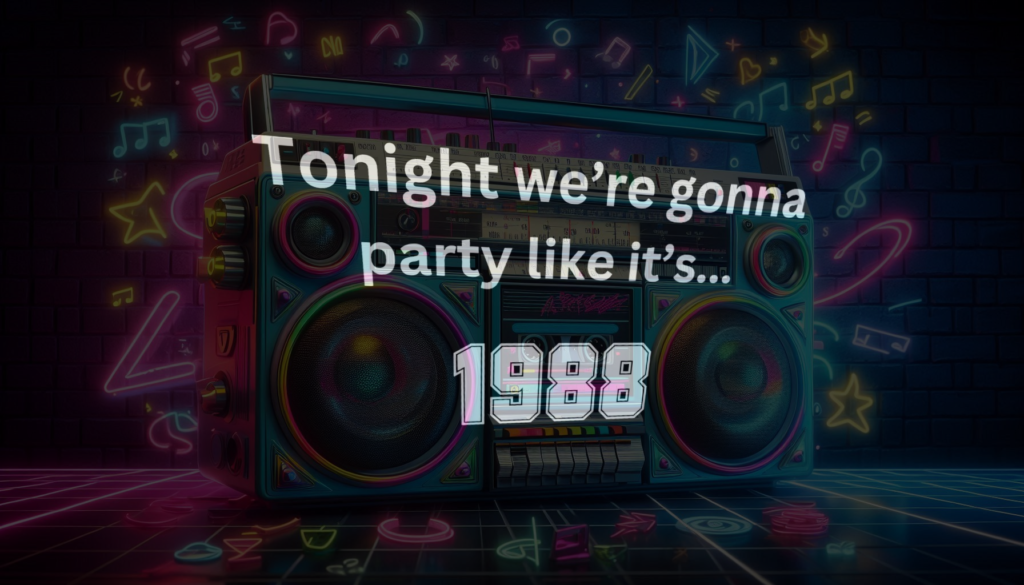
1988 was a pivotal year in my life. It was also a year in which the UK singles chart changed drastically. This does not mean that it was any less vibrant than previous years, it’s just that the acts which sold in the greatest quantities were not to my taste. Although it was an evolution which had been in the offing, it really hit home this year.
Before I launch into a diatribe about all the “bloody awful” music of 1988, I need to remind myself that there are only two types of music. There’s music that you like and music that you don’t like. There are a myriad different reasons, why you might not like it, but if that is the case, don’t listen to it and don’t buy it.
1988’s blend of music was, on the face of it, not that dissimilar to previous years. There was an amalgam of pop, rock, and indie. But there was also a certain, manufactured sound which dominated the airwaves.
Artists have always come and gone, and 1988 was no different. The technology on which we enjoyed our music was changing too. Although the trusty 7-inch single played a crucial role in enabling us to buy music and take it home, there were new formats on the block. The compact cassette single had been a thing for a few years now, and the new-fangled CD single was beginning to make its mark.
The beauty of the 7-inch single lay in its simplicity and accessibility. It was an easy way for fans to get their hands on new tracks without committing to an entire album. For many, these singles were the soundtrack to their daily lives, spinning on turntables at home or discos and weddings and such.
Once again, join me as we look back in time. Buckle up then, as we head back to 1988. It’s a fascinating journey through the cultural and musical shifts of the time. Again, I have picked the five top-selling singles, plus my own purchases. After buying thirty or more singles in 1985, 1986 and 1987, I eased off the pedal in 1988 with only 23.
That’s not to say that I reduced the amount of music I bought. My buying habits changed, and I bought a lot more albums. I never seemed to have much luck with 33⅓ rpm vinyl, so a great deal of the albums I bought were on cassette. Unfortunately, they were lost in a house move.
But enough already. Here’s some spiel about the singles of 1988.
The Mixed Bag of 1988’s Top-Selling UK Singles
Mistletoe & Wine by Cliff Richard
Ugh, where to begin? I mean, Cliff must have been down with the kids when he was a kid in the 50s and 60s… and 1986. But now? This track was garbage even back then. Cliff’s Christmas number one was a far cry from much of the rest of the charts in 1988.
Of course, he was a British institution so all those grannies who loved him in his heyday, still love him. Accordingly, they bought this turd.
The Only Way Is Up by Yazz & The Plastic Population
Annoying – check
Cheesy – check
Catchy – check
A proper piece of pop fluff – also check
There’s no denying it, but this is an absolute gem! Of course, it’s become the ultimate wedding party anthem, getting the old ‘uns from their seats at weddings, but there’s a reason for that. Its infectious positivity and upbeat tempo are impossible to resist.
I Should Be So Lucky by Kylie Minogue
Here we had SAW flexing their muscles through a barely twenty-year-old girl. She was everybody’s favourite girl next door, but this track? Goodness, it was trash.
Kylie’s transition from soap star to pop queen began with tracks such as I Should Be So Lucky, but this was overplayed and overly saccharine. As an established artist she is the bomb. She has produced some great pop and even rock music. Of course, this is a belting pop song – people bought it in large numbers. But I’m sorry Kylie, I’m not feeling lucky with this one.
Especially For You by Kylie Minogue & Jason Donovan
Ugh, pass the sick bucket. This was dreadful. The power duo from Neighbours tried their hand at a romantic ballad. The result was dreadful, Donovan’s mullet epitomised how rubbish this was. Clearly, their TV chemistry didn’t quite translate into musical brilliance.
I Think We’re Alone Now by Tiffany
And just like that, we are here with the fifth top-selling single of 1988. Something with a bit of a spark. Tiffany was probably at least as annoying as Kylie and Jason, and the product of a US TV talent show. But she was new to us in the UK.
She brought a fresh, youthful energy to bear on her cover of Tommy James & The Shondells’ 1967 track. It was a good cover. It was catchy, fun, and had a rebellious spirit that stood out amongst the rest.
Singles I Bought in 1988
So, now we come to the 1988 singles that I am going to have to take responsibility for spending money on. It wasn’t just about the top-selling singles for me; or was it? Is there a direct like between the smaller number of singles entering my collection and the relative dross that sold well this year?
Aztec Camera – How Men Are
How Men Are by Aztec Camera is a reflective track that combines perfect jangly guitar melodies with Roddy Frame’s contemplative lyrics. The song explores themes of vulnerability and emotional complexity, delving into the intricacies of male identity and relationships.

Musically, it features a blend of pop and folk influences, characterized by its melodic hooks and Roddy Frame’s expressive vocal delivery. Initially, the lyrics suggest that there is a woman who needs to escape from a relationship. The person she wants to leave has perhaps done something to upset or even hurt her but cannot understand that it is over between them. Is there an element of control on his part?
Later it seems that it’s his unreasonable behaviour that is the problem. There’s a slow-growing sense of selfishness, he cannot understand that it is unreasonable to expect a reward for every good deed he does. A beautiful track, it was my gateway drug into Aztec Camera.
It sums up Roddy Frame’s whole catalogue. In that it offers a take on personal and interpersonal dynamics without resorting to clichés or exaggeration.
I bought my copy on 12-inch – no date noted. It reached number 25 in the UK singles chart. Not stellar, but in my opinion, it was just softening us up for the next single, Somewhere In My Heart, which rose to number 3 in June and was Aztec Camera and Roddy Frame’s lone top ten hit.
The Bangles – In Your Room
This track reached number 35 in the UK singles chart. While it wasn’t as successful in the UK as some of their other hits like Manic Monday or Eternal Flame, it still showcased the band’s signature pop-rock sound and was a top-five hit in the US.
This track has a vibrant, upbeat pop-rock vibe typical of The Bangles’ style. It features jangly guitars, catchy melodies, and Susanna Hoffs’ distinctive vocals. The song’s energetic feel and playful lyrics capture the essence of late eighties pop, making it a fun and engaging listen.
It was written by Susanna Hoffs with Tom Kelly and Billy Steinberg. Kelly and Steinberg had worked on Madonna’s Like A Virgin, Cyndi Lauper’s True Colors and Eternal Flame. In a link with another 1988 record, Steinberg has stated that the song’s style is very much like Mony Mony. This of course, was a hit for Tommy James & The Shondells – the first group to record I Think We’re Alone Now as covered by Tiffany.
Billy Bragg & Wet Wet Wet with She’s Leaving Home & With A Little Help From My Friends
Where to start with this one? I think that I knew about Billy Bragg’s part in Kirsty MacColl’s mid-eighties hit A New England. Apart from that though, I’m not sure he had ever come onto my radar. His biggest hit prior to this was 1985’s Levi Stubb’s Tears which had reached number 13 in the UK singles chart.
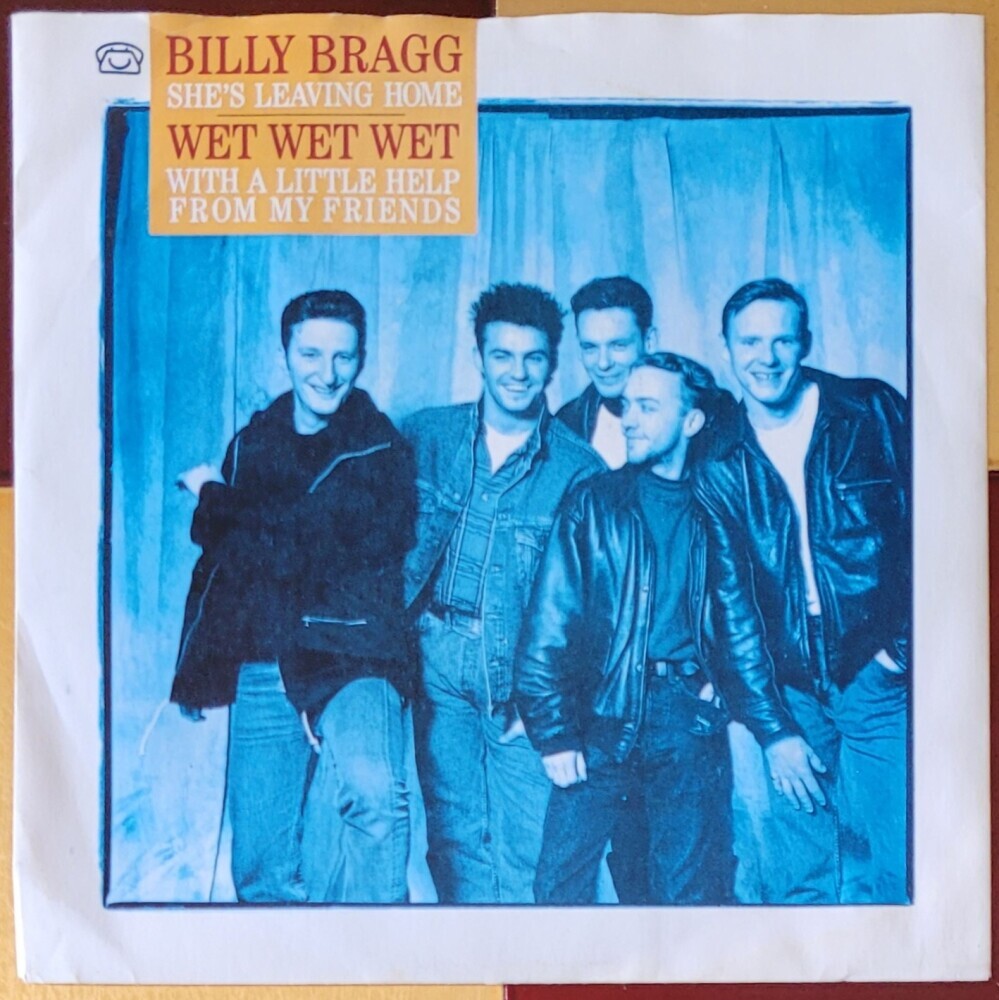
On the other hand, Wet Wet Wet was a group that I was aware of. They were an odd antidote to the saccharine pop that SAW was pushing out. Why odd? Well, they were obviously talented lads with great awareness of the soul music that they modelled themselves on. There was a faint whiff of cheese though.
That said, all great sounds were at one point derided as cheesy or derivative or as just plain crap by the great and the good of music fans or journalists or whatever. Enough said. During sessions for 1987’s Popped In Souled Out, Wet Wet Wet were well enough thought of for Willie Mitchell* to work with them in Memphis. This work was released in 1988 as The Memphis Sessions.
This double A-side was a charity effort on behalf of Esther Rantzen’s recently founded charity Childline (0800 1111). Of course, both tracks were written by Lennon and McCartney. Of course, this engendered confected outrage like, “How dare they… cover the Beatles… sacrilege.”
Anyway, She’s Leaving Home was Bragg’s cover, accompanied by Cara Tivey on piano (and the parents’ verses). Wet Wet Wet covered With A Little Help From My Friends. A sniffy music critic might argue that Pellow’s version of A Little Help borrowed a little too much from Joe Cocker’s version and lacked Ringo’s almost tortured diffidence.
It was released in May 1988. In its first week, it was number 5 before hitting the top of the chart and spending 4 weeks doing its best work to keep Kylie’s Got To Be Certain from number 1.
*Mitchell worked with the likes of Ann Peebles and Al Green in the late 60s and early 70s.
The Christians’ Harvest for the World
Another cover. This time, it was the Isely Brothers’ 1976 UK top ten hit, Harvest For The World that got the treatment. I think The Christians never quite achieved their full potential. I’m not sure why.
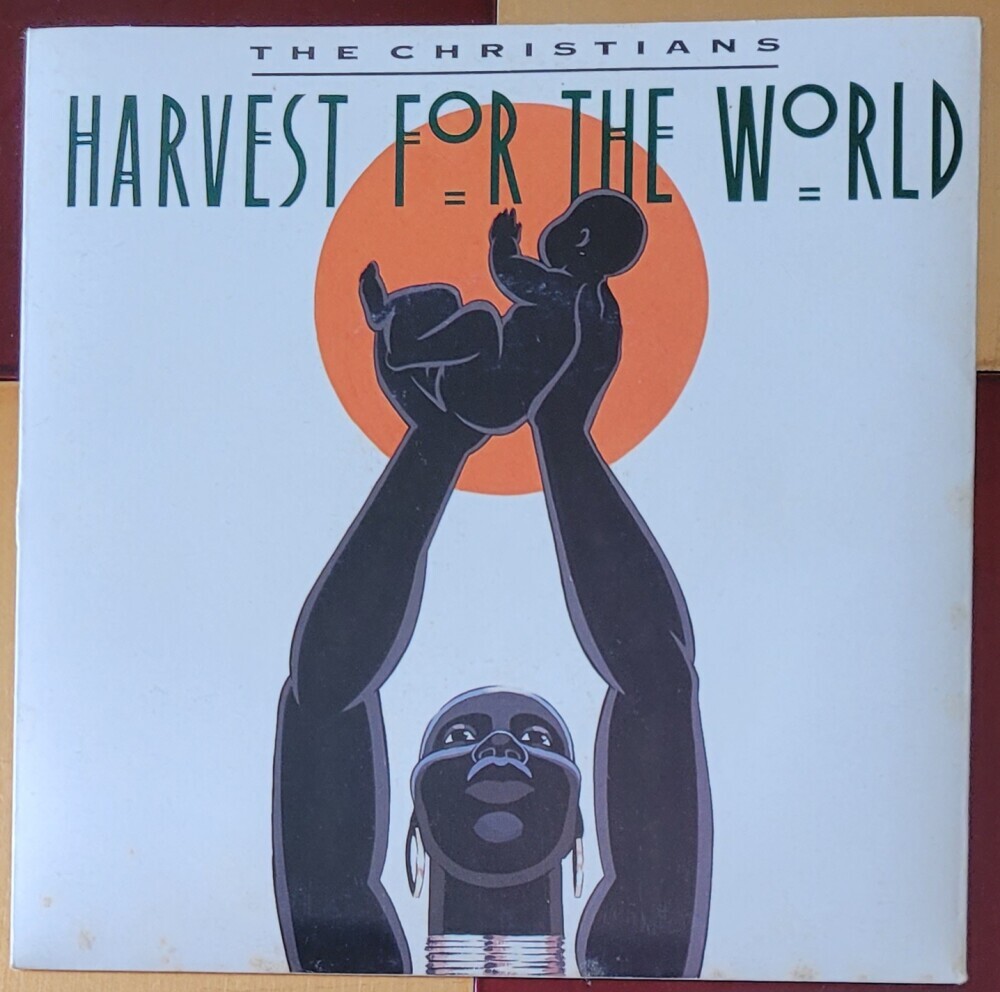
Released as a standalone charity single for Disasters Emergency Committee a group of British Charities, including the Red Cross and Save the Children Fund, it reached number 8 in the UK singles chart.
It first charted in the middle of October 1988. I started at university at the beginning of October, so it may have been the first music-related purchase that I made in Liverpool. Why that’s pertinent, I don’t know. But there you go. An insight into the life of this then-18-year-old.
Enya – Orinoco Flow
This single was a major success, reaching number one on the UK Singles Chart and staying there for three weeks. It was Enya’s breakthrough hit, introducing her ethereal sound to a global audience and becoming one of her most iconic songs.
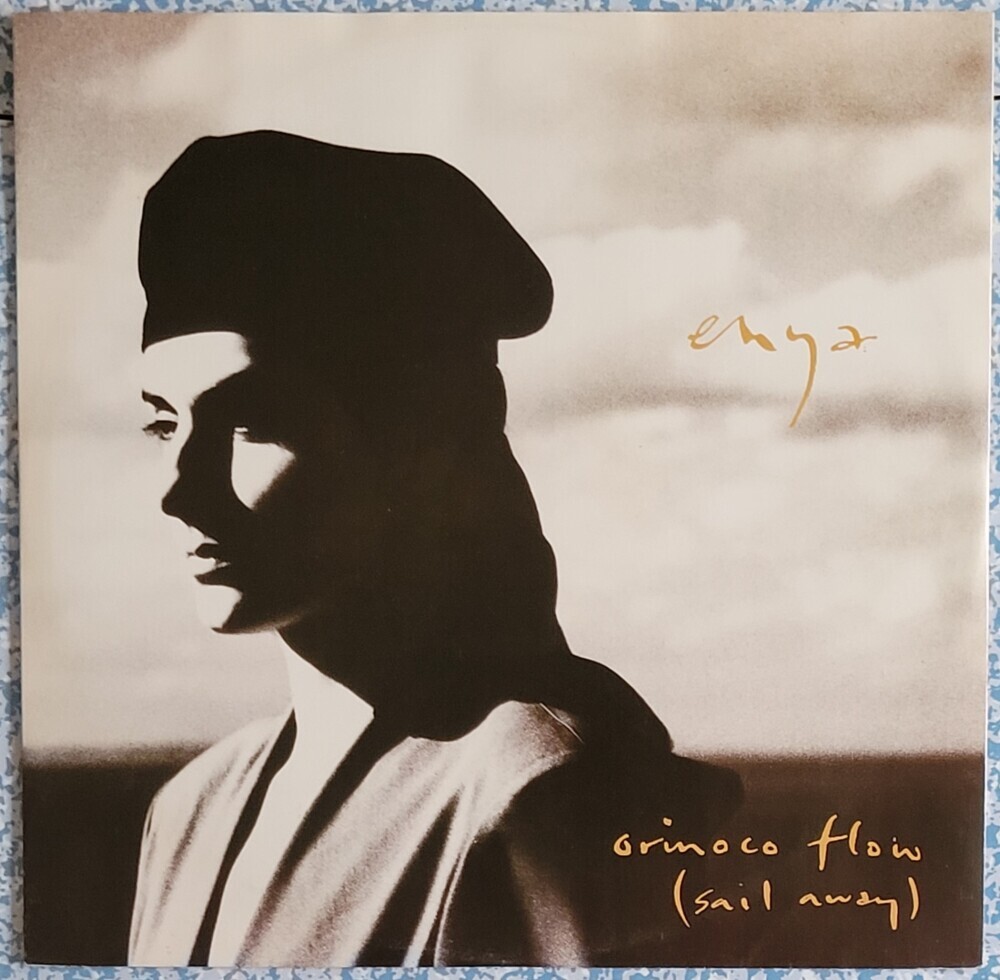
I bought the 12-inch version. This has a slightly elongated version of the title track and two tracks on the B-side. Instead of just Out Of The Blue on the 7-inch, there is also an Irish language track, Smaoitím… (D’Aodh Agus Do Mháire Uí Dhúgain). Literally, I think [of]… Hugh and Mary O’Dugan – her grandparents.
Known for its ethereal and soothing sound, Orinoco Flow is characterized by lush, layered vocals and a rich, atmospheric production. The song’s new-age vibe is enhanced by its use of synthesizers and orchestral elements, creating a sense of tranquillity and escapism. Its repetitive, chant-like chorus adds to its hypnotic quality.
Enya had, of course, been part of Clannad. She sang with the family group between 1980 and 1982. She appeared on two Clannad albums. The first was Crann Úll, and she was uncredited. Her second and last album with Clannad was Fuaim, for which she was credited. After this, she embarked on her solo career.
Fat Boys with Chubby Checker – The Twist (Yo, Twist)
This was another of those buys of mine that indicated the hugely catholic nature of my musical taste. I was soon to enter a world where Chubby Checker was the sort of name that some of my more musically aware new friends would have been fans of.
But enough of that. This was a straight-up cover that I’ve just listened to again. You can feel the spectre of Run DMC with this one. It’s that age-old question, if Run DMC had not covered Walk This Way in 1986, would this one have been possible?
I doubt it. And, by extension, their previous single would not have been possible either. So far, so nebulous. Let’s look at glance at both and see if we can work out what was going on. 1987’s single was a cover of The Surfaris’ 1963 hit Wipe Out. So, like Run DMC, but not like Run DMC.
This had been a collaboration with the Beach Boys which reached number 2 in the UK singles chart. Only Rick Astley’s Never Gonna Give You Up could stop it from reaching number 1.
The Twist (Yo, Twist) was a cover of Chubby Checker’s 1960 and 1962* Billboard Hot 100 number one. It wasn’t a straight up cover. With the original words sung through to the original tune. It was more of a re-interpretation with elements of the original, sung by Chubby Checker and rap verses by the Fat Boys.
This too reached the number 2 spot in the UK singles chart. It was denied the number 1 position by first Bros and then Glenn Medeiros. Unlucky, lads. This was an interesting take on the classic original track. Perhaps more so than if it had been a straight cover. Bringing that hip-hop flare to a classic dance, it really stood out.
*Yes indeed. Chubby Checker had two (US) number ones with the same track – quite a feat.
Heart’s Never & These Dreams
Overblown. Absolutely.
The thing is, I loved Heart. Alone is perhaps my favourite track of theirs, but I missed out on buying that, so this would have to do. In terms of the cold numbers of chart performance, These Dreams was a monumental flop upon its original, 1986, UK release. It reached number 62, then sank without a trace.
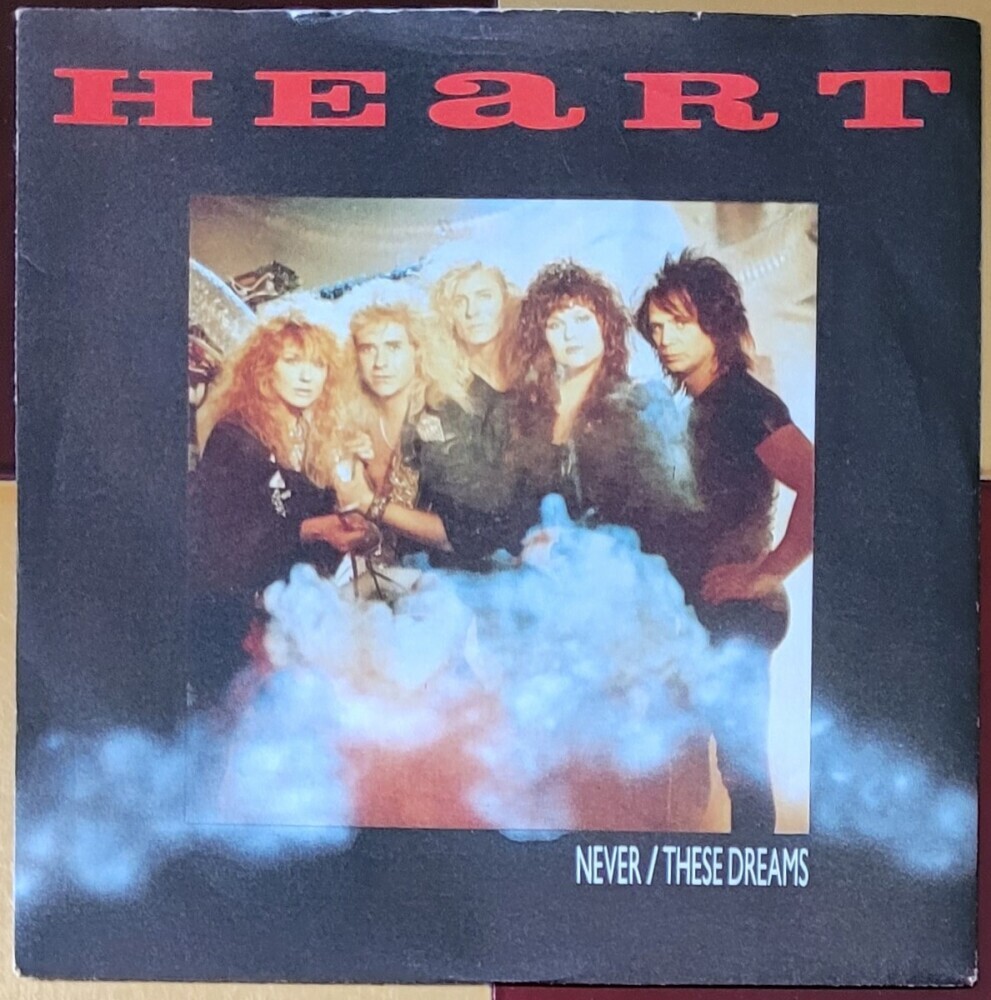
Twelve or so months later and Alone was released in the UK. This stormed the charts and broke into the top ten. It spent five weeks there, with its highest position of number 3.
After a couple of tracks which bubbled around the top 30, Who Will You Run To? and There’s The Girl, These Dreams was re-released as a double A-side with Never. Both These Dreams and Never had charted well on the Billboard Hot 100 – These Dreams was a number one there as it laboured to number 62 in the UK singles chart. Never reached number 4 on the Billboard Hot 100, although it had not previously been released in the UK.
In theory, Never was the lead track. However, radio play was dominated by These Dreams. Written by Bernie Taupin (Elton John’s wordsmith) and Martin Page (Paul Young, Starship, Robbie Williams), it is a power ballad. Nancy Wilson performs lead vocals as opposed to the usual lead singer; sister Ann. Liner notes to its parent album, Heart, indicate that the track is dedicated to Wilson’s friend Sharon Hess who died from leukaemia.
The Hollies’ He Ain’t Heavy He’s My Brother
So, this next chunk of text is nostalgia about nostalgia. Originally released in 1969, He Ain’t Heavy was a number 3 hit in the UK singles chart for the Hollies. It also reached number 7 on the Billboard Hot 100.
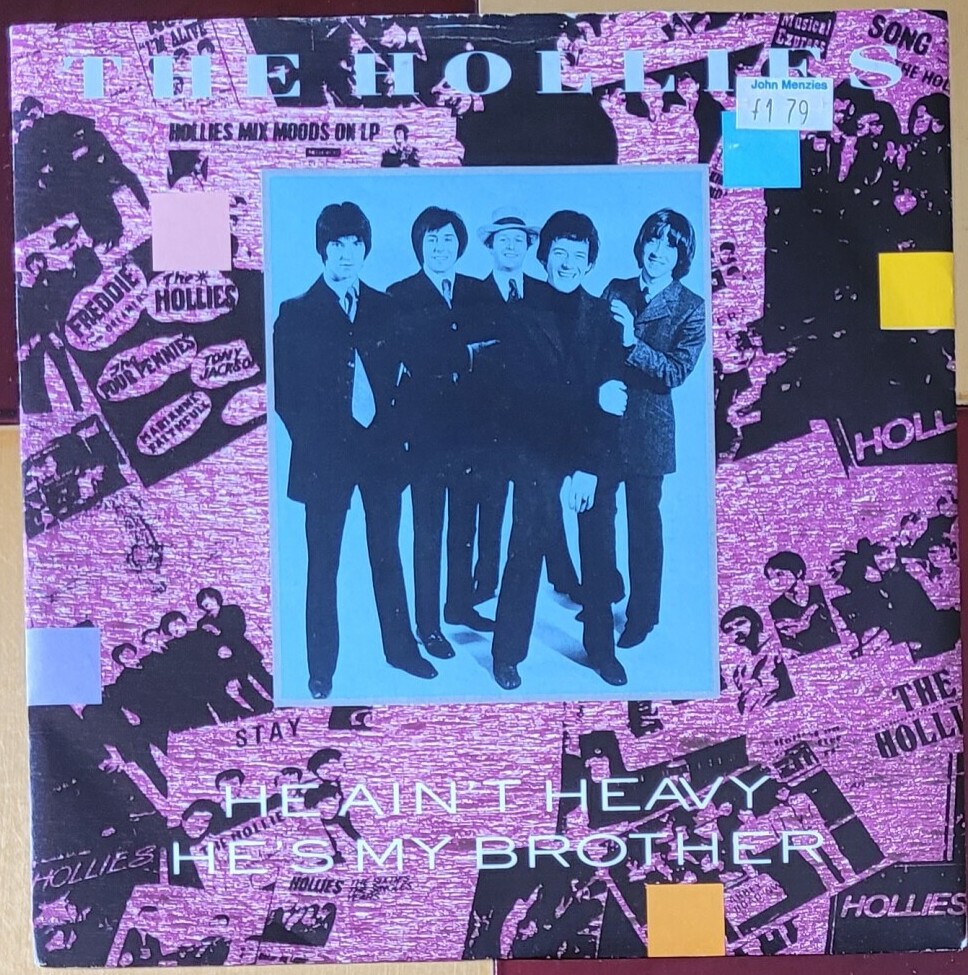
Written by American Bob Russell and Bobby Scott, He Ain’t Heavy was inspired by an 1884 religious tract. In it, a girl is carrying a big baby boy. Asked by someone if she needs help, she replied, “No, he’s not heavy. He’s my brother.”
The track features Elton John on piano – he was a session musician at the time. He received £12 for his efforts. Its 1988 re-release, which saw the track reach number 1 in the UK singles chart, was the result of it being used in the cheesiest Miller Lite advert.
Now, I went to away to university at the end of September 1988 and the track entered the UK singles chart at the start of September. It still has the John Menzies price sticker attached – £1.79. Given this information, I’m going to stick my neck out. It’s as likely as not that I bought it on an aimless ramble around Shrewsbury during that lazy September.
I bought the track again, as a cover in 2012. This time I bought it as a download. The Justice Collective featured Gerry Marsden, Paul Heaton, Peter Hooton, Glenn Tilbrook, Robbie Williams, Paul McCartney, Paul Jones and others, including two original members of the Hollies, Bobby Elliott and Tony Hicks.
It’s an emotional and heartfelt ballad that remains timeless. It’s a tracks that hits you right in the feels every single time.
Liverpool FC – Anfield Rap
Released in 1988, this novelty rap song reached number 3 on the UK Singles Chart. It was created to support Liverpool FC’s (losing) appearance in the FA Cup Final and is remembered for its humorous take on football culture.

Written by Liverpool’s Australian star, Craig Johnston, the track combines elements of rap and pop with a humorous twist, reflecting the football culture of the time. The song features spoken verses by Liverpool FC players, set against a catchy, upbeat backing track. Its playful and light-hearted vibe makes it a novelty hit, albeit appealing to a relatively narrow demographic of football fans and music listeners.
As I have already mentioned, it was a number 3 hit in the UK singles chart. It spent 2 weeks in the top ten and 6 weeks in the charts overall. I bought the 12-inch version because… well, because I was a huge Liverpool fan who at the time had been to Anfield a total of twice. That would all change later in the year.
Mel and Kim’s That’s The Way It Is
This was the dynamic duo’s final UK singles release. I bought this one on 7-inch – I had previously bought the earlier singles on 12-inch.
They were a bubbly pair, perhaps the only way to be in the face of the terminal cancer that would claim Mel’s life in 1990. It was a number 10 hit – a position which it reached in March 1988. Musically, there’s not much to say, it was certainly formulaic. The rhythmical aspects of the track are delivered by SAW’s clunky-sounding and dated drum machine.
It is carried along by the energy of the sisters. Although I have just listened to it, I cannot remember how it goes. This is the trouble with a great deal of SAW’s output – it is just bland and unremarkable. Of course, that said, I bought it, so it must have made an impact at some level.
Midnight Oil – Beds Are Burning
A bit of Aussie rock herewith this one. Beds Are Burning is a politically charged rock anthem that combines driving rhythms with powerful lyrics. The song’s musicality is marked by its strong beat and anthemic chorus, creating a sense of urgency and momentum.
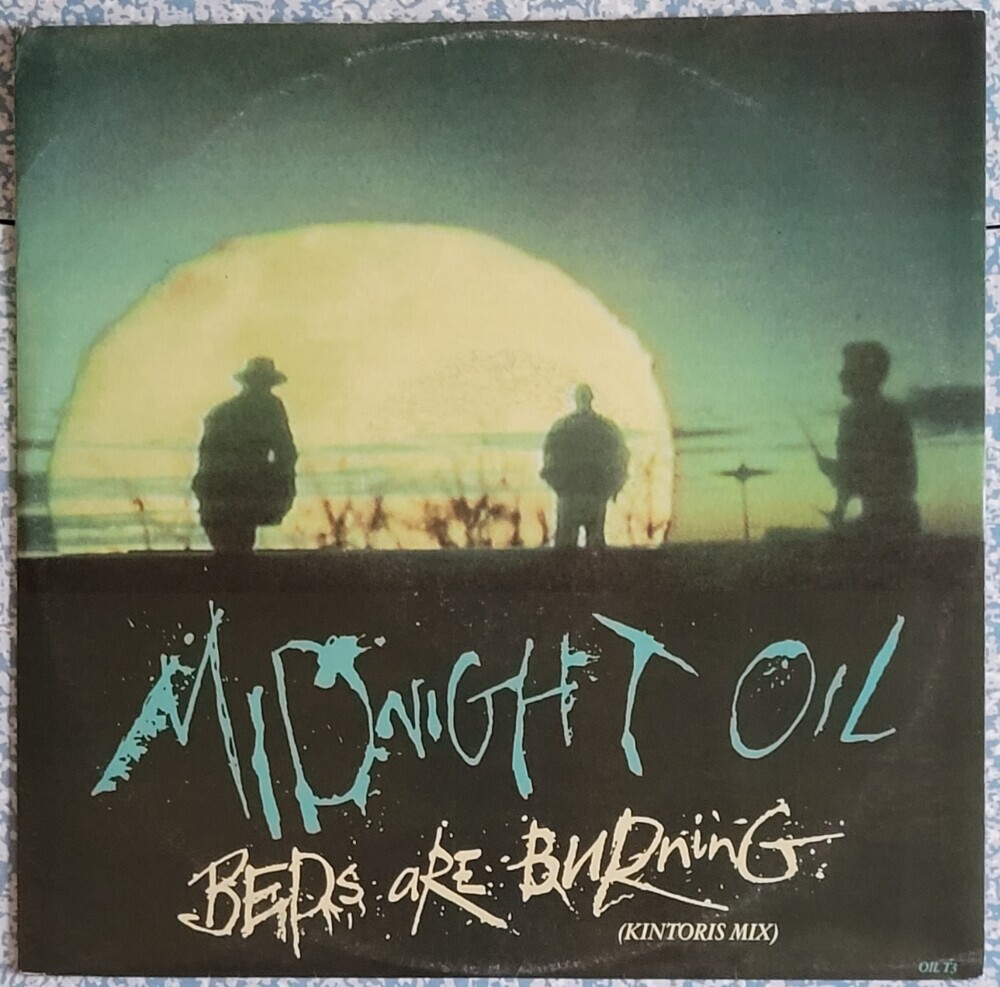
Amongst other things, the band advocated Aboriginal rights. This track addresses the issue of Indigenous land rights in Australia, calling for justice and restitution. The track’s message is one of activism and awareness, urging listeners to recognise historical injustices and take action to support Indigenous communities, making it a timeless call for social change.
I bought the 12-inch version. Why, I am not sure – it has no less than 4 different mixes of the track..
The Primitives – Way Behind Me
This song peaked at number 36 on the UK Singles Chart. The Primitives were part of the late 80s indie pop scene, and while Way Behind Me didn’t reach the heights of their hit Crash, it remains a firm favourite with fans. I bought it because I liked it and also because I had missed out on Crash.

With its indie pop sensibility, Way Behind Me is all jangly guitars, with a driving beat, and Tracy Tracy’s bright, melodic vocals. The song has a raw, garage-band feel, typical of the indie scene of the late eighties. Its catchy hooks and energetic delivery make it a standout track in the band’s catalogue.
Taja Seville – Love Is Contagious
I adored this track, and I bought it on 12-inch. I spoke to me of something that I was looking for, but never actually found. Cryptic, huh? This was mainly because I was far too defensive and generally unwilling to allow myself to be vulnerable enough to find it. It’s what I imagined I would spin for any girl I could persuade to come round to… ‘hem, ’hem… listen to my record collection.
Love Is Contagious is a pop track with a catchy melody and upbeat rhythm. Instrumentally, it is characterised by bright synths and infectious hooks, creating a feel-good atmosphere.
It celebrates the power of love and its ability to spread positivity and joy – its message is one of optimism and connection. Listeners are encouraged to embrace love’s transformative potential and share it with others, ultimately highlighting the universal and uplifting nature of love.
Joyce Sims – Walk Away
Walk Away was a track that I loved. I think that there is an aspect to my buying it related to the wonderful Phyllis Nelson track, Move Closer, from 1985. This had spent 8 weeks in the UK singles chart top ten – with a week at number 1. So, it was there, available for me to buy, and I didn’t.
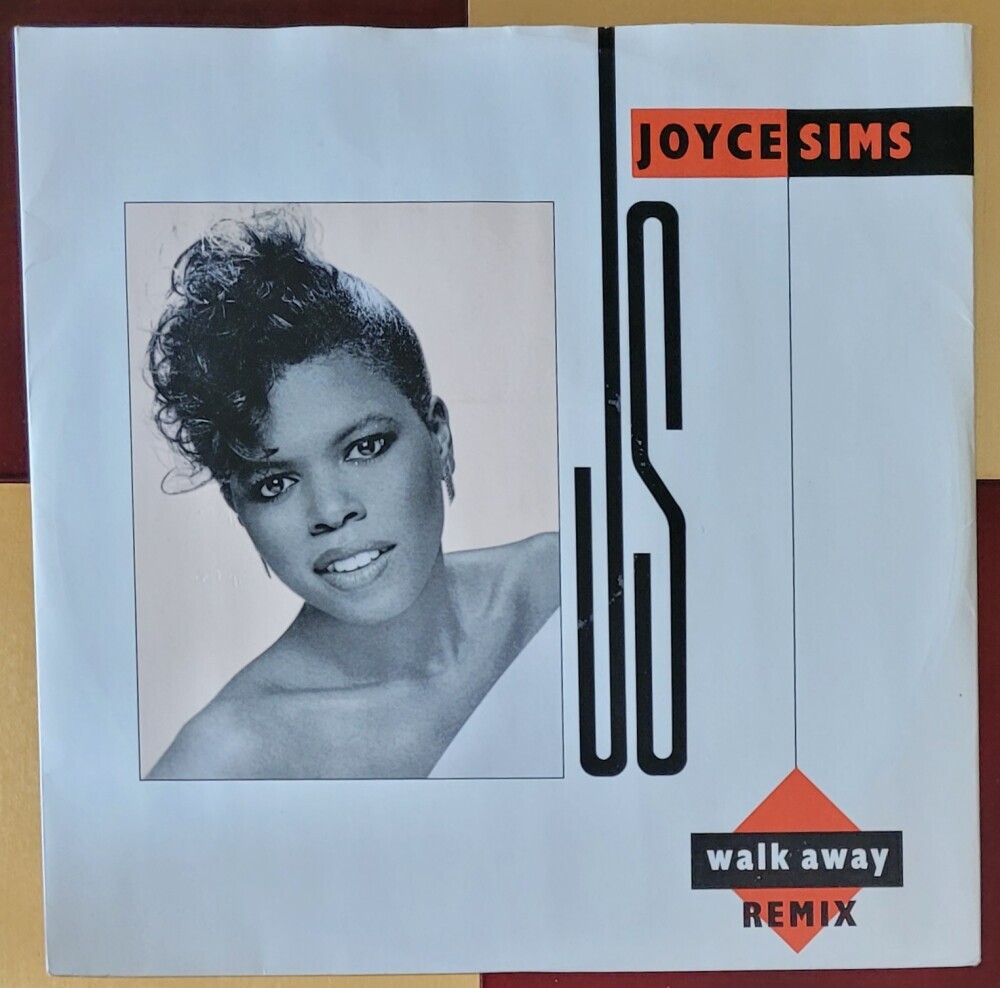
So, when this Joyce Sims track came along, I was primed and ready. To be brutally honest, the two tracks are chalk and cheese. Move Closer is a slow, soulful ballad whilst Walk Away is more upbeat and dance-oriented. Nelson’s track focuses on romantic intimacy, whereas Sims’ song emphasizes empowerment and independence.
Both tracks are delivered of strong vocal performances. Nelson’s is more emotive and tender, while Sims’ is assertive and dynamic. Nelson wrote Move Closer about her own love affair with a much younger man in Philadelphia. Conversely, Walk Away is about the need to leave a relationship for personal growth and self-respect.
Both have uplifting sentiments. Nelson’s is about living for the now, embracing the relationship and making the best of it because it could be over soon enough. Walk Away is about understanding that this relationship is over, and she the singer needs to be strong and move on.
Walk Away was the follow-up to Come Into My Life, a top-ten hit for Sims. There’s an element of these two songs as two sides to the same coin. It did not fare quite as well, reaching only number 24 in the UK singles chart. I bought my copy on 12-inch on a date I cannot remember.
It has 3 different versions of the track:
12” Club Mix – Hip Hop Style (7:15)
12” House Mix (5:35)
Hip Hop Dub (6:36)
Status Quo’s Running All Over The World
In thinking about this, I am minded to comment that I bought a tremendous number of covers and re-releases. In many cases, they were charity singles. This was a re-cooked version of the Quo’s classic 1977 track Rockin’ All Over The World.

The charity, in this case, was Sport Aid, a division of Sport Relief, a division of Band Aid. OK, OK, I scoff. But my point is that suddenly, it seemed that charities begat charities which begat even more charities. Where was the government in all of this?
The original Rockin’ All Over The World was not written by the Quo. Instead, it was written by John Fogerty of Credence Clearwater Revival fame. This new version made several changes, not least the addition of a ‘g’ at the end of the verb in the title.
Now, there’s not much that can be said about the Quo. They were just the quintessential churners out of solid gold nuggets of pop perfection. However, this reached the not-so-heady heights of number seventeen in the UK Singles Chart. Maybe, there was a bit of charity fatigue creeping in?
Like my Mel & Kim purchase, I paid the princely sum of £1.79 to John Menzies to obtain it. This was a summer hit, so by now, I was funding my habit by working in a local creamery in the cottage cheese hall.
I didn’t write the date that I bought it. However, I imagine I would have gone into town on a Saturday morning on the twenty-past-ten bus. Then, I would have stridden up to Menzies before wandering down to the record department. Next, I would have made my choice before handing over my money. The last part of the rigmarole was the journey home before cranking up my turntable… you get the picture.
Tanita Tikaram’s Good Tradition
When I bought this, I think I was experiencing a folk-goth-rock phase. Around the same time, I bought All About Eve’s eponymous debut album. Also in 1988, I was treated to Tracey Chapman’s debut album regularly by the girl upstairs from me in Dale Hall on the Carnatic site of Liverpool University’s Halls of Residence.
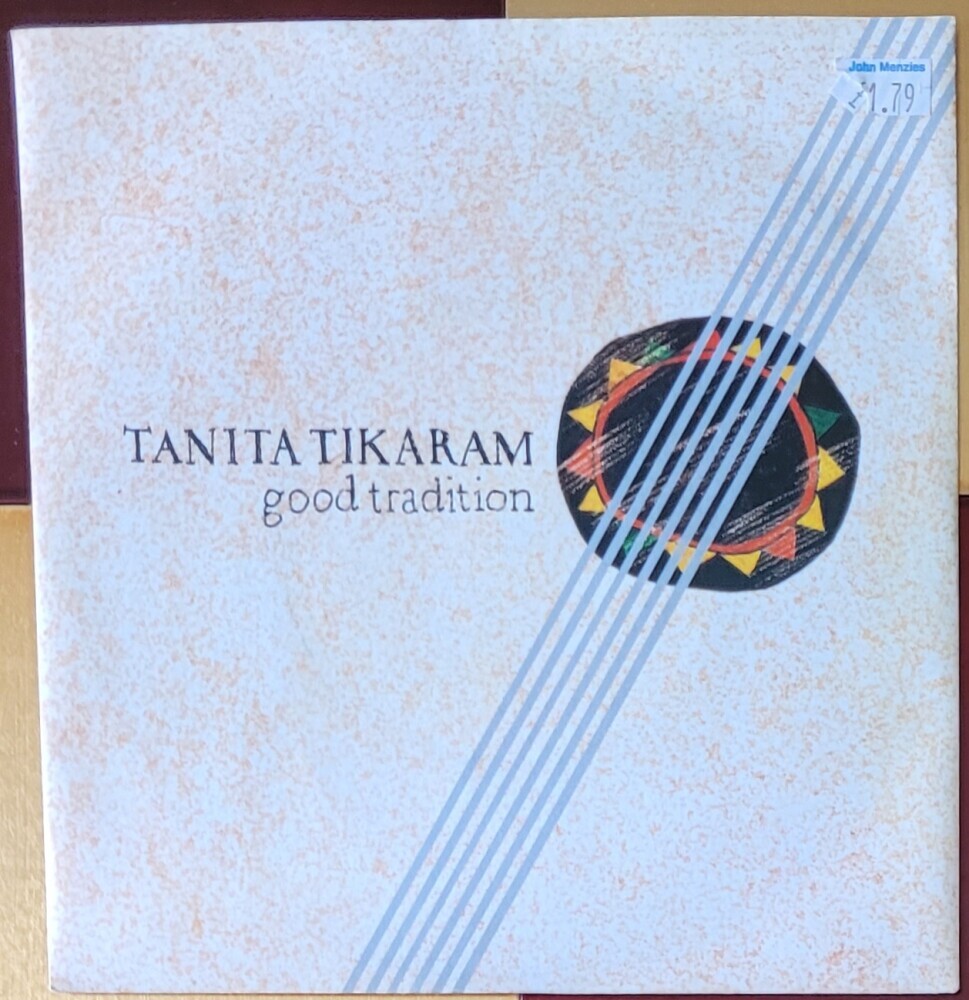
But back to Good Tradition. It was a late summer hit, which first entered the UK singles chart at the end of July before reaching its highest position of number 10 at the end of August. I bought it because I liked it.
It’s a unique blend of folk, pop, and world music influences. It features a lively acoustic arrangement, with prominent use of guitars, accordion, and a rhythmic bass line. The folk feel comes from its instrumentation. Its upbeat tempo and catchy melody add a pop sensibility.
Of course, Tanita Tikaram has that deep, distinctive voice. This is a key element of the song – which she uses to bring a sense of warmth and sincerity. There is an emotion that complements the song’s themes.
These are love, family, and the enduring bonds that connect people. Good Tradition reflects on the positive aspects of relationships and the importance of maintaining traditions that bring people together. All in all, there is an optimistic and celebratory tone. She highlights the joy and comfort found in close relationships. The song’s simplicity helps to convey its message of love and connection in a rapidly changing world.
Transvision Vamp’s I Want Your Love
And then we have this. Once again, my eclecticism is writ large. On the one hand, it’s trashy, throwaway pop-rock. On the other, it conveys a deeper meaning. The singer wants love. She doesn’t want expensive gifts or money. It’s almost a cry for help.
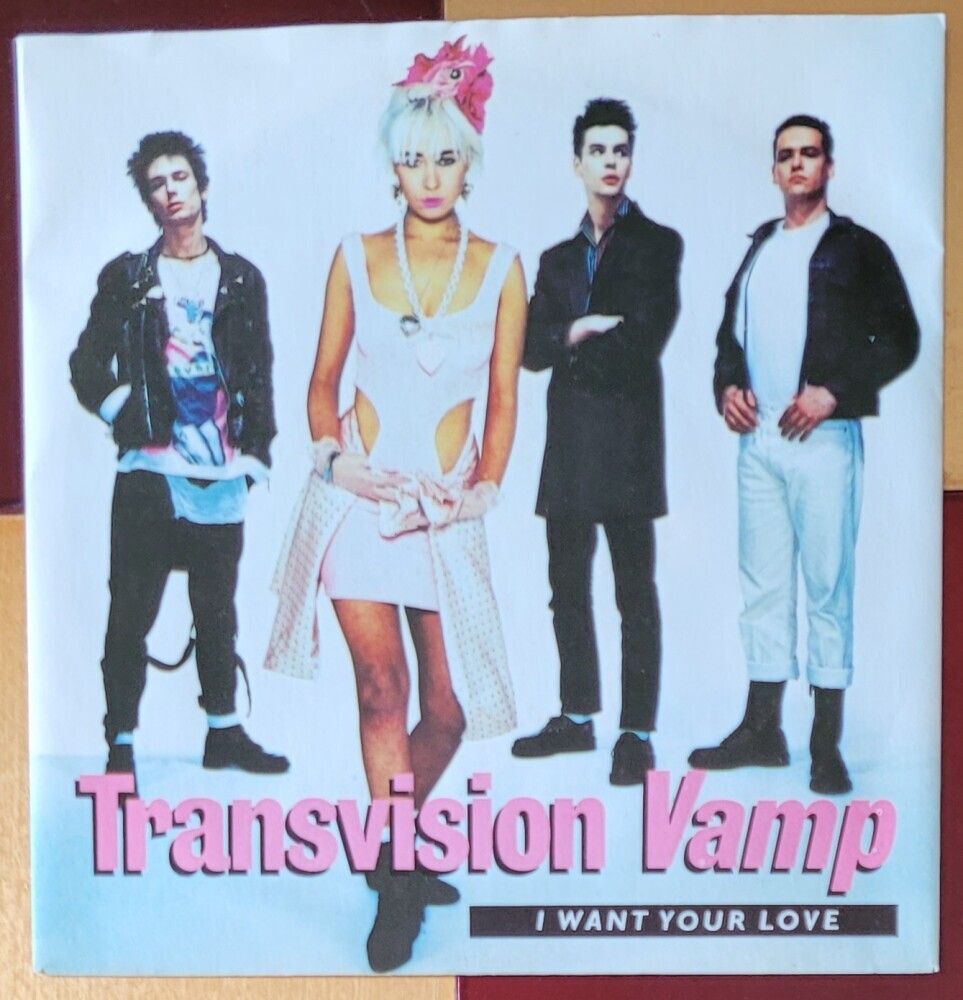
Whatever nonsense I could spout about it, one thing is true, it’s bold and edgy. With its attitude and rebellious streak, it’s a standout pick that I really loved. I didn’t write on it when I bought it, but it was a summer hit. It reached number 5 in the UK singles chart, spending a total of four weeks in the top ten.
They were one of the first bands that I saw, at Mountford Hall, University of Liverpool, sometime in October or November 1988. Lead-signer Wendy James was possessed of an almighty roar, which she used to good effect. The rest of the band were, I guess just towed along in her slipstream. I remember the gig well – she managed to have 300 sweaty and hormonal 18-, 19- or 20-year-old lads eating from the palm of her hand.
A proper eighties sound from a bona fide phenomenon of the decade.
U2 With Angel of Harlem & Desire
1988 saw the release of U2’s film documentary and its accompanying album, Rattle And Hum. The album was an October release, and I had landed in Liverpool by then, so I bought it on cassette in HMV on Church Street.
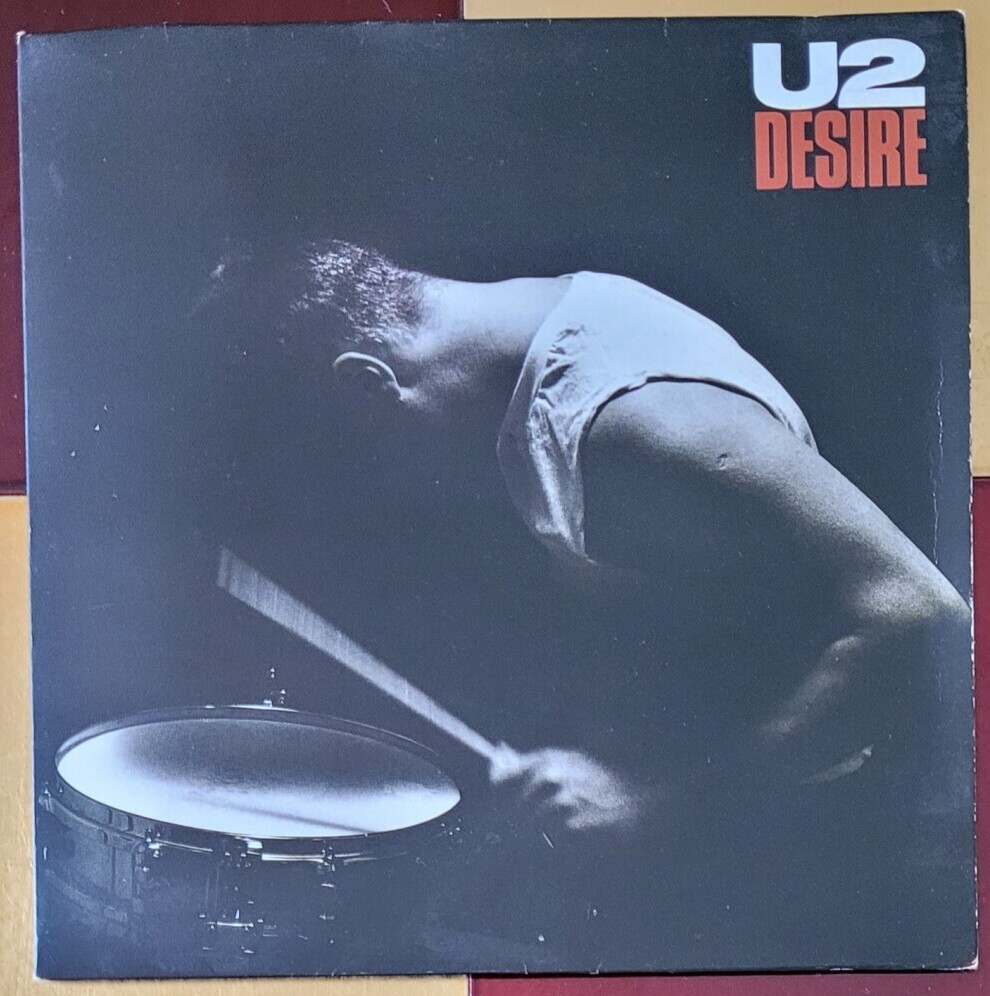
But that’s for a whole other article. With regards to the singles from the album, of which there were 4, the first one I bought was Desire. Dynamic and energetic, this was released a couple of weeks ahead of the album.
From the opening guitar riff, the track showcases the band’s rock roots while incorporating elements of blues and boogie-woogie. It is driven along by The Edge’s distinctive, chugging guitar riff. It’s a reminder of the band’s classic rock and roll and blues influences. There’s a strong rhythm section, with a prominent bass line and steady drumming that give it a driving, relentless energy.
Overlaid are Bono’s vocals which are passionate and gritty. They capture the urgency and intensity of the song’s themes. His delivery is both commanding and charismatic, which add to the song’s raw, live feel. The closing harmonica gives the song a bluesy touch, enhancing the song’s rock and roll vibe.
The track discusses themes of longing, ambition, and the pursuit of passion. The song reflects on the seductive nature of desire and the drive to achieve one’s goals, whether in love, life, or career. Bono plays on vivid imagery to convey the intensity of this desire. He draws on drug paraphernalia and metaphors related to fire and heat. The lyrics paint a picture of a restless spirit, constantly seeking fulfilment and meaning.
So, there’s my analysis of the track. But let’s cut to brass tacks for a second. Despite everything, Desire is a simple enough slice of Rock n Roll. It’s sometimes forgotten, perhaps because Bono can come over as, erm… irritating, it gets forgotten that U2 are such a brilliant band. Desire is influenced by the Stooges track 1969.
Then there is the fact that it weighs in at just under three minutes. This relative brevity and its simple arrangement remind us of the band’s punk roots. Yes, by 1988 they are the biggest band in the world and a much more polished and accomplished group. But facts are facts.
Perhaps surprisingly, it was U2’s first-ever UK number 1. It made the number one spot in October 1988 and spent a total of 8 weeks in the chart.
Next up was Angel Of Harlem. This was a Christmas release, and it made the UK singles chart in the week ending 17 December, reached number 9 on the Christmas chart and then disappeared.
Namechecking several New York landmarks and Jazz personalities, Angel Of Harlem is an homage to Billie Holiday and also to, well… Harlem and New York.
It blends rock with jazz and blues influences. The track has a prominent brass section, giving it a rich, vibrant sound. The Edge’s guitar work complements the song’s upbeat rhythm, while Bono’s vocals are heartfelt and expressive.
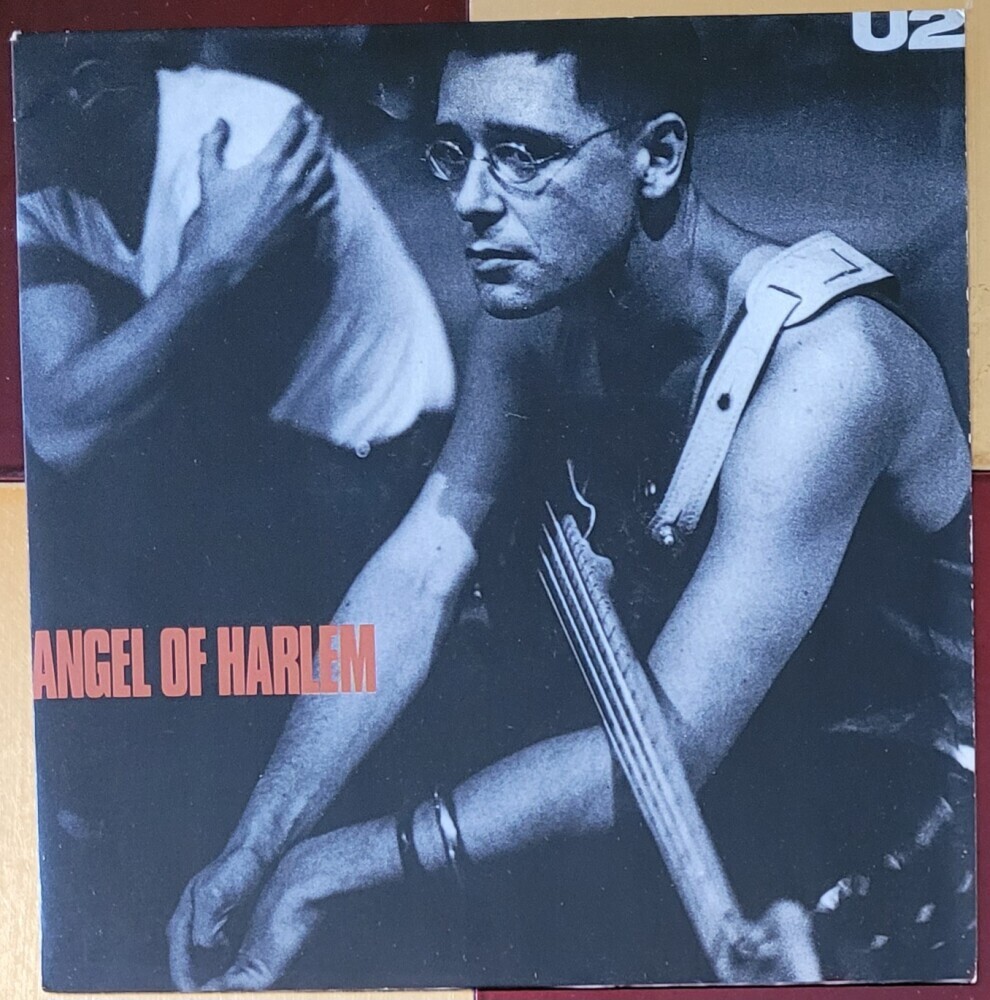
As it is an homage to Holiday, it celebrates her legacy. Though the NYC landmark references, it evokes the city’s energy and cultural history. The song’s warm, nostalgic tone and catchy melody make it a standout track in U2’s discography.
UB40 With Chrissie Hynde’s Breakfast In Bed
Here is another UB40 track from after their halcyon cool. Originally a US single for Dusty Springfield, this is the second collaboration between UB40 and Chrissie Hynde. In 1985, they scored a number one with their cover of Sonny and Cher’s 1965 hit I Got You Babe.
This one did not make it to the top of the chart, but it made a very respectable number 6. Critical reception for the track was mixed. Some called out the imbalance between Chrissie Hynde’s powerful rock voice and Ali Campbell’s much more laid-back tones.
Whatever can be said about the voices, it has UB40’s reggae-infused sound, which takes the track in a different direction to Dusty’s original. That said, some listeners may prefer Dusty Springfield’s original version, which has a more soulful and emotive delivery. The reggae adaptation might not resonate with those who favour the classic soul sound.
Overall, this cover offers a different take, although it may not appeal to purists of the original version. I bought it because I liked it – and probably because I had not bought any of UB40’s early stuff.
Womack & Womack’s Teardrops
This groovy track had an undeniable rhythm and a feel-good factor that made it an essential addition to my collection. I just loved the easy vibe of this tune right from the very first time that I heard it.
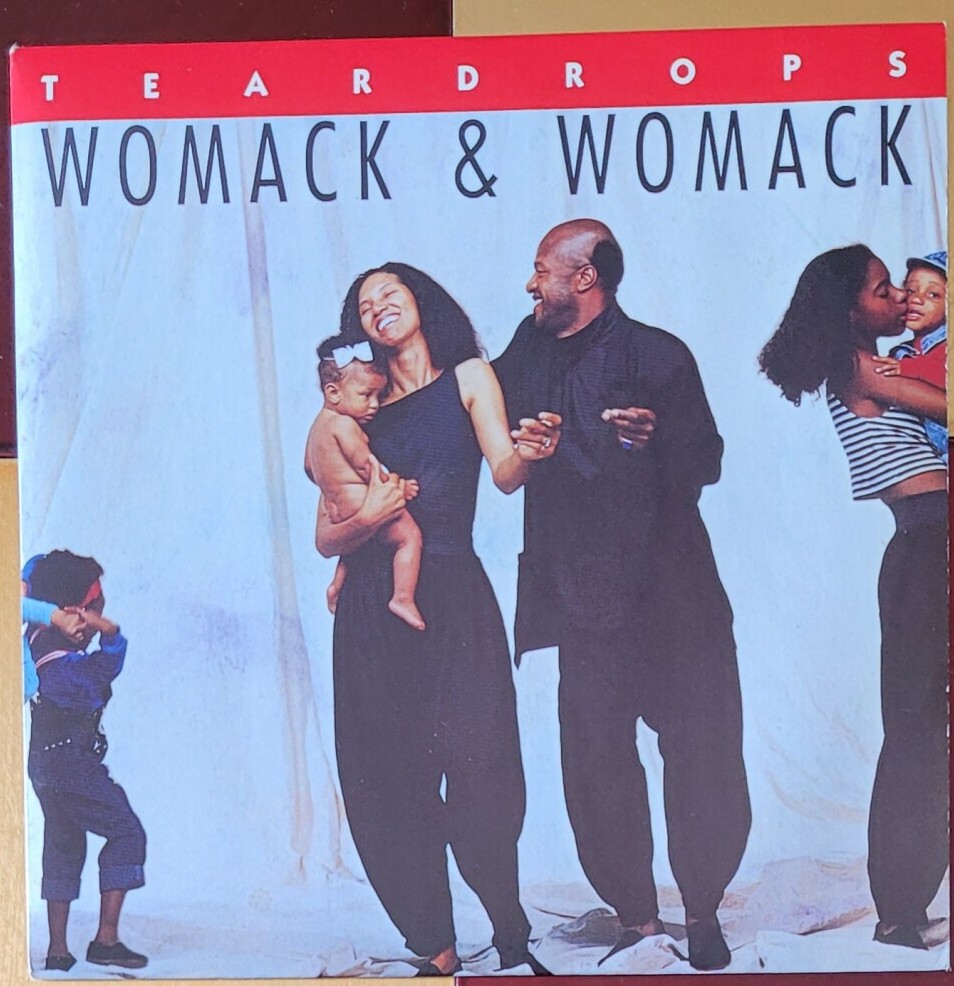
It first charted in the UK in early August. I didn’t note when I bought it, but I imagine it was before I went off the university. Many of my purchases were chart-influenced, so its peaking at number three in September would bear this out. It spent two weeks at number 3 and a total of 8 weeks in the top ten. Overall, it spent 17 weeks in the UK singles chart.
A Decline in Buying Singles
1988 marked a significant shift in my music-buying habits. Compared to previous years, the number of singles I bought saw a noticeable decline. There were a few key reasons for this transition, the most notable being my move to Liverpool University.
I was growing up and, in the process, more able to give an entire work a chance rather than the highlights from it. The depth and richness of albums became more attractive as my tastes evolved and matured. I bought more albums.
Looking back, it’s clear that the music scene of 1988 was saturated with a lot of what can only be described as ‘dross.’ With Cliff Richard, Kylie Minogue, and the likes dominating the charts, my personal choices felt like a world apart in quality and diversity. Chart-toppers were more about mass appeal and less about musical innovation, which made seeking out those hidden gems so much more rewarding.
I would say that the high water mark for singles is 1985-86. Before this, the high end of the charts was populated by some quite brilliant music. Starting in 1987 and gaining speed by 1988, the high end of the charts was home to much lower-quality tracks. Overall, generally.
Strangely, this may have made it easier to select tracks of quality and ignore the garbage. Or not. Either way, ultimately, this shift opened up new avenues for musical exploration, leading to a richer and more engaging listening experience.
Comparing the Popular Chart with Personal Choices
I could be a real music snob and make some right up-myself-comment. Something like, “You know, when I look at the 1988 charts and compare them with my collection, it’s like night and day in terms of quality.” There’s a fair bit of garbage in my record collection.
However, my point is more about the fact that the top-seller list was stuffed with tracks that seemed more geared towards sales. Sales and not much else. Certainly not artistic merit. For example, songs from SAW and their Australian puppets dominated the airwaves, but they lacked the depth and originality that made music memorable. But then, I bought stuff from their North London puppets too. So, what gives?
On the face of it, my buys seem to be almost random. Did I have a conscious strategy? Probably not. Certainly, the eclectic nature of my musical tastes is apparent. I’ve described them already, but my collection contains soft rock from Heart to Beatles covers by Billy Bragg and Wet Wet Wet.
Covers seems to be a theme. There was Harvest for the World from The Christians, a track by The Isley Brothers. UB40 with Chrissi Hynde covered a Dusty Springfield track. Even Rockin’ All Over The World, amended to Running All Over The World, was not originally penned by Messrs Rossi and Parfitt. And there was the re-release of The Hollies’ He Ain’t Heavy He’s My Brother.
Perhaps the only tracks I bought with a bit of edge were those from Midnight Oil, Tanita Tikaram and Transvision Vamp. Much else was safe, almost run-of-the-mill stuff. I probably veered towards what was in the charts, but I gravitated towards those tracks that were less commercially successful.
Of course, we always find an exception or two, and Orinoco Flow from Enya was a number one, as was U2’s Desire. Taja Sevelle’s Love Is Contagious, Womack & Womack’s Teardrops and several others were top ten hits.
Legacy of the Music of 1988
The music of 1988 left an unmistakable mark on the industry’s landscape. Despite the nature of the material put out in her name in 1988, Kylie has gone on to become an icon in the pop world, showing that even the mostly sugary tunes of 1988 have a legacy.
Later, I even bought at least one Kylie single – 1997’s Some Kind Of Bliss. By now she had escaped SAW’s clutches to work on this with James Dean Bradfield and Nicky Wire of the Manic Street Preachers. This had been prompted by her previous work with fellow Australian Nick Cave.
Yazz & The Plastic Population’s The Only Way Is Up is one track that will never die. This remains evergreen at gatherings, lifting spirits and getting people, young and old, onto the dance floor. It’s proof that some hits can unite the generations.
Some of 1988’s tracks have been played ever since. Some of them, like the SAW output are tracks that I’d rather not hear again, thank you.
Others, such as Teardrops, are still a delight to hear. Others still, like Good Tradition, don’t get played enough. These are the true gems, appreciated for their musical intricacy and originality. Not some pushbutton, formulaic nonsense with a perma-blonde Australian soap star warbling over it.
In essence, although the individual tracks that make up the legacy of 1988 differ from other years, the overall legacy is not that different. Any given year has tracks that set my teeth on edge. For 1988’s I Should Be So Lucky, there’s 1980’s There’s No One Quite Like Grandma. For 1988’s Mistletoe And Wine, there’s 1982’s Save Your Love. And it goes on.
A bit like King Cnut, I cannot control what other people go out and buy. For a kickoff, there’s more of them than me. No, the real beauty of the legacy of 1988’s music lies in its diversity. There’s something for everyone. I need to get over myself and see it as setting the stage for future musical exploration. I Should Be So Lucky could be the gateway to Nick Cave and The Bad Seeds or Manic Street Preachers. It was a year of great contrasts, offering trash and diamonds. Its impact continues to be felt.
